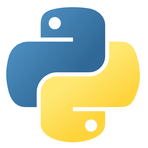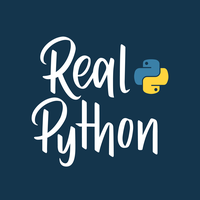Brython: Python in Your Browser
January 13, 2025, 4:03 pm
In the vast landscape of web development, JavaScript reigns supreme. Yet, a new contender has emerged: Brython. This innovative tool allows developers to wield Python, a language celebrated for its simplicity and elegance, directly in the browser. Imagine a world where you can write Python code to manipulate the Document Object Model (DOM) just as easily as you would with JavaScript. Brython makes this dream a reality.
Brython, short for Browser Python, is a Python 3 implementation that runs in the browser. It compiles Python code into JavaScript, enabling developers to use Python’s syntax and libraries to create dynamic web applications. This opens a new frontier for Python developers who prefer its syntax over JavaScript’s often convoluted structure.
### The Advantages of Brython
Brython brings several advantages to the table. First, it allows developers to write the same code for both the server and the client. This is a game-changer for those who want to maintain consistency across their applications. You can use Python to handle server-side logic and client-side interactions seamlessly.
Second, Brython provides access to browser APIs. This means you can manipulate the DOM, handle events, and make AJAX calls using Python. For developers who are already comfortable with Python, this reduces the learning curve associated with JavaScript.
Moreover, Brython is an excellent tool for teaching. It allows students to experiment with Python in a web environment without the need for complex setups. They can run their code directly in the browser, receiving instant feedback. This immediacy fosters a deeper understanding of programming concepts.
### Installation and Setup
Getting started with Brython is straightforward. You can install it via a Content Delivery Network (CDN), GitHub, or package managers like npm and PyPI. The simplest method is to include a script tag in your HTML file that points to the Brython library hosted on a CDN.
For example, you can create a basic HTML file like this:
```html
```
When you open this file in a browser, it will display an alert box saying "Hello, Brython!" This simple example demonstrates how easy it is to get started.
### Understanding Brython's Inner Workings
At its core, Brython consists of two main components: `brython.js` and `brython_stdlib.js`. The first is the engine that compiles Python code into JavaScript, while the second provides the standard library functionalities. When you write Python code within a `
Brython, short for Browser Python, is a Python 3 implementation that runs in the browser. It compiles Python code into JavaScript, enabling developers to use Python’s syntax and libraries to create dynamic web applications. This opens a new frontier for Python developers who prefer its syntax over JavaScript’s often convoluted structure.
### The Advantages of Brython
Brython brings several advantages to the table. First, it allows developers to write the same code for both the server and the client. This is a game-changer for those who want to maintain consistency across their applications. You can use Python to handle server-side logic and client-side interactions seamlessly.
Second, Brython provides access to browser APIs. This means you can manipulate the DOM, handle events, and make AJAX calls using Python. For developers who are already comfortable with Python, this reduces the learning curve associated with JavaScript.
Moreover, Brython is an excellent tool for teaching. It allows students to experiment with Python in a web environment without the need for complex setups. They can run their code directly in the browser, receiving instant feedback. This immediacy fosters a deeper understanding of programming concepts.
### Installation and Setup
Getting started with Brython is straightforward. You can install it via a Content Delivery Network (CDN), GitHub, or package managers like npm and PyPI. The simplest method is to include a script tag in your HTML file that points to the Brython library hosted on a CDN.
For example, you can create a basic HTML file like this:
```html
```
When you open this file in a browser, it will display an alert box saying "Hello, Brython!" This simple example demonstrates how easy it is to get started.
### Understanding Brython's Inner Workings
At its core, Brython consists of two main components: `brython.js` and `brython_stdlib.js`. The first is the engine that compiles Python code into JavaScript, while the second provides the standard library functionalities. When you write Python code within a `

